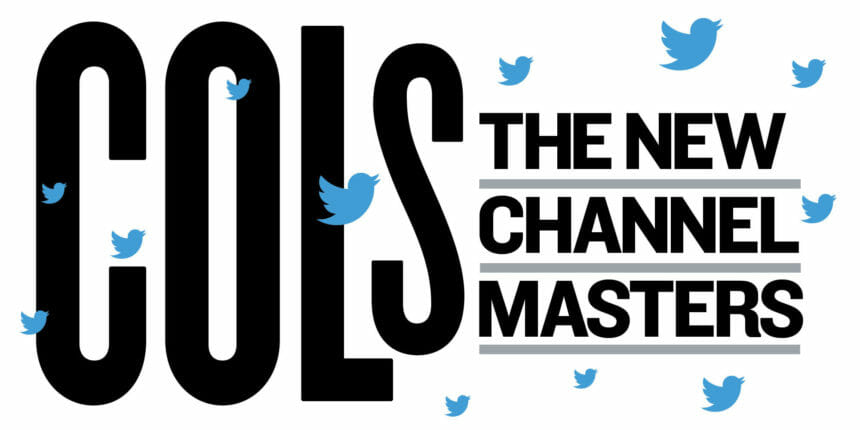Medical oncologist Dr. Jack West has a modest online presence. He is followed by 13,000 people on Twitter, while his TEDx Talk, originally published in June 2011, has been viewed on YouTube just short of 5,600 times through late July 2018.
In the wider realm of digital influencer marketing, where a web celeb generally needs 100,000 or more followers to be taken seriously by brands, he barely registers.
But for drug companies looking to engage with doctors, West is an A-list influencer. Along with his fellow connected opinion leaders (COLs), he represents a burgeoning opportunity.
Pharma companies have long partnered with key opinion leaders (KOLs), loosely defined as influential doctors who serve as advisers and product advocates. Traditionally, membership in this group has been determined by offline metrics: the volume of research and published articles they produce, the frequency and prestige of their speaking appearances at medical meetings, and their presence on advisory boards and committees.
Until recently, social media followers had been largely irrelevant.
It’s not that traditional KOLs have waned in influence. They continue to play a critical role in the marketing mix and remain a sought-after constituency. But where KOLs were once the sole tastemakers in medicine, they’re now joined by a new breed of channel masters: Physicians who are savvy on social media and whom other clinicians enjoy reading for concise takes on trends, research, or new products.
“Five years ago, pharma didn’t really know what to do with these people,” says Kilian Weiss, GM of Veeva Oncology Link, a subscription database of oncology KOLs. “Now, they’re learning.”
As a more holistic approach to treatment grows in popularity, Weiss sees pharma companies reaching out to COLs for advice on gauging patient sentiment. In contrast to traditional KOLs — who, while tapped into their own specialty-specific networks, are often “relatively disconnected from the patients,” Weiss notes — physicians with large online followings can often provide insight on how a patient community is responding to a given course of treatment.
Over the past few years, Weiss has noticed an uptick in the number of pharma companies that are actively building relationships with clinicians and including them on advisory boards because of their digital followings. It seems social media presence has fully evolved from a drawback to a draw.
Blaming the regulators
It’s odd to discuss the emerging trend of COLs, considering digital influencers outside pharma have had a sizable marketing presence for nearly a decade.
Today, brands throw billions of dollars into sponsorship deals with active social media users simply because they command large and engaged audiences.
Adam Rivietz is cofounder and chief strategy officer of #paid, an influencer marketing platform that matches brands with influencers. The company’s database boasts more than 15,000 users. Clients span industries from beauty (Sephora) and tech (Microsoft) to e-commerce (Etsy) and retail (Ikea). However, pharma is notably absent from the list. #Paid does have a contract with GlaxoSmithKline, but Rivietz won’t disclose details of the partnership.
He chalks up pharma’s hesitancy to partner with digital influencers to the tight regulations that govern the industry. “While all influencers are bound by the advertising rules set out by the FTC, medical influencers must follow the strict rules set out by the FDA as well,” he explains. The requirement “makes the space far less competitive than other influencer niches.”
This is not consumer marketing, where a Kardashian is pushing a product
Leilani Latimer, Zephyr Health
A hype man for his business, Rivietz believes pharma is missing out. He suggests manufacturers could start by using his platform to promote unbranded disease conditions before increasing to a level of brand-specificity. He says the industry needs to familiarize itself with “the process of working with influencers, including approving content and ensuring it aligns with FDA regulations.”
In theory and practice, this could prove difficult. In 2015, Kim Kardashian made a splash when she posted an ad for Duchesnay USA’s morning sickness drug Diclegis without properly listing the risks and side effects, which drew the ire of the FDA. The snafu was repeated, nearly beat for beat, this past summer. Both incidents raised more questions than they answered about how the FDA monitors and polices DTC advertising on social media.
Connected doctors
Rather than tapping clinicians to blast out promotional content on Instagram, pharma appears to be pursuing a less overt strategy: identifying connected doctors and initiating one-on-one relationships.
If there was such a thing as a social media A-list for physicians, Dr. Kevin Pho, pictured below, would be on it.
A primary care doctor with 153,000 Twitter followers, Pho built a name for himself online thanks to his blog, KevinMD.com. Launched in 2004, it began as a way for him to answer and clear up common questions and misconceptions he heard from patients.

Pho published one of his first posts after Vioxx, an anti-inflammatory made by Merck, was recalled, because he had a lot of patients taking the drug. To his surprise, one of them found the post and thanked him for it. “That’s when I realized blogs, and later social media, could be used to connect with patients outside the exam room,” he says.
Today, Pho maintains an active presence on Twitter and YouTube, while his blog has evolved into a platform where a network of physician contributors publish their own posts. A regular on the speaker circuit, he talks at conferences, including the DTC National Conference and eDTC Revolution, primarily on how the industry can use social media to connect more effectively with patients.
Pho says he has been approached by several companies to join their advisory boards, but to date, he has declined all offers, citing a lack of “time or resources for further commitments.”
Even in the recent past, such requests would have been borderline unthinkable. Pho lacks the standard KOL-type credentials that would have made him a target for pharma companies, says Cadent Medical Communications president Wendy Balter. “This guy is a curator. He’s someone who made a voice for himself [online],” she explains. “He’s not a traditional KOL, but he’s important.”
At the same time, some traditional KOLs, including Dr. Eric Winer and West, have grown more interested in engaging with users online. Winer, a medical oncologist at the Dana-Farber Cancer Institute, posts videos on YouTube with titles such as “What is HER2-positive breast cancer?”
West, in addition to attracting a wide audience online, is also “a thought leader in the traditional sense: Well-published, a study investigator, and an established speaker on the congress circuit,” Balter says.
Unsurprisingly, his insights are in hot demand. According to his website, West serves as a consultant or adviser to nine pharma companies, including Bristol-Myers Squibb, Celgene, and Merck.
“There’s a convergence,” Weiss notes.
Mentions and metrics
For pharma companies looking to target COLs and channel masters, it’s still early days. On social media, which remains a mess of mentions and often malleable metrics, it can be difficult to differentiate between somebody who wields enough influence to be a valuable addition to an advisory board and someone who simply posts a lot.
“This is not consumer marketing, where a Kardashian is pushing a product,” says Leilani Latimer, VP of marketing, partnerships, and commercial operations at Zephyr Health, a vendor that helps pharma companies glean insights on KOLs and identify high-potential referring providers.
While Zephyr Health takes into account a doctor’s online activity as part of its determinations on influence and reputation, it’s simply one data point among many.
Most of the variables are more traditional — and deemed more objective — than social stats. Those variables include a clinician’s advisory board positions, membership in professional societies, and data from the Physician Payments Sunshine Act.
Yet Zephyr continues to ponder how it can better evaluate and weigh social activity and influence. “In the past three years, we’ve been having this conversation with all of our customers,” Latimer notes.
These same discussions are happening at Veeva. Weiss says the company is working on an enterprise solution to help the industry find rising KOLs in oncology based, in part, on their social metrics. He envisions building a service capable of analyzing social chatter after a major industry event to help companies pinpoint and target rising COLs.
Is this vision less splashy than hiring a celebrity to promote a drug to their hundreds of millions of followers? Of course. But for manufacturers looking for an edge, it might be more important.
From the September 01, 2018 Issue of MM+M - Medical Marketing and Media







